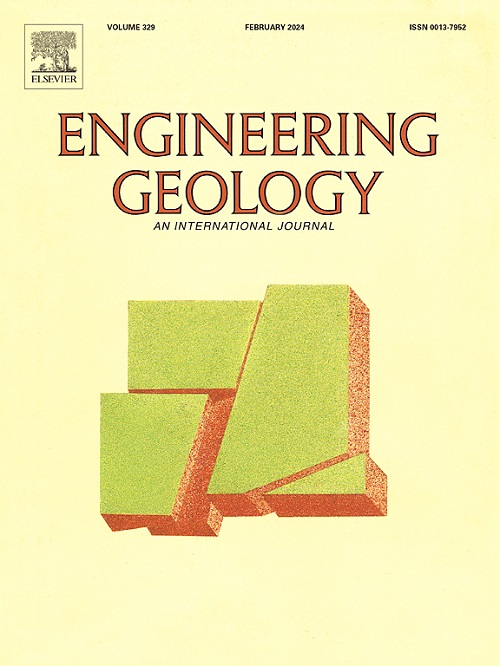Pore-scale investigation of water-CO2-oil flow in shale fractures for enhanced displacement efficiency and CO2 sequestration
IF 6.9
1区 工程技术
Q1 ENGINEERING, GEOLOGICAL
引用次数: 0
Abstract
CO2 geological sequestration plays an important role in energy and environmental sustainability. However, CO2 channeling through fracture networks in shale reservoirs reduces sequestration efficiency. Injecting CO2 followed by water flooding, driven by capillary forces, can suppress CO2 channeling and enhance sequestration. This work establishes pore-scale models for CO2-oil and water-CO2-oil flows within three-dimensional shale fractures to explain this underlying mechanism. The volume of fluid method is employed to integrate the immiscible flow between water and a mixture fluid comprising CO2 and oil, wherein the interaction between CO2 and oil remains miscible and is governed by molecular convection-diffusion. The effects of contact angle, injection rate, and CO2 volume on displacement are analyzed. The results show that high injection rates of CO2 enhance the mass transfer between CO2 and oil components, with the injection rate positively correlating with displacement efficiency. Water flooding following CO2 injection suppresses CO2 channeling attributable to capillary effects, resulting in an approximately 20 % enhancement in oil recovery compared to CO2 flooding. Although a substantial volume of CO2 reduces displacement pressure, it leads to a premature breakthrough. An increase in contact angle results in a large amount of mixture fluid being trapped in blind-end pores, corresponding to unsatisfactory displacement effects. Nonetheless, an increased water injection rate augments the contact between the water and the mixture fluid, facilitating CO2 dissolution. This results in a gradual decline in outlet mass flow and enhancements in oil recovery and CO2 sequestration efficiency.
求助全文
约1分钟内获得全文
求助全文
来源期刊

Engineering Geology
地学-地球科学综合
CiteScore
13.70
自引率
12.20%
发文量
327
审稿时长
5.6 months
期刊介绍:
Engineering Geology, an international interdisciplinary journal, serves as a bridge between earth sciences and engineering, focusing on geological and geotechnical engineering. It welcomes studies with relevance to engineering, environmental concerns, and safety, catering to engineering geologists with backgrounds in geology or civil/mining engineering. Topics include applied geomorphology, structural geology, geophysics, geochemistry, environmental geology, hydrogeology, land use planning, natural hazards, remote sensing, soil and rock mechanics, and applied geotechnical engineering. The journal provides a platform for research at the intersection of geology and engineering disciplines.
 求助内容:
求助内容: 应助结果提醒方式:
应助结果提醒方式:


